The Difference Between First-Party and Third-Party Cookies
First-party cookies and first-party data became the advertising industry’s buzzwords when Google announced the phase-out of third-party cookies by 2023. However, this announcement seems only reasonable since major web browsers like Safari and Firefox had banned third-party cookies already in 2013.
This article explains how eliminating third-party cookies will affect publishers and advertisers, the difference between first-party and third-party cookies, and the future of first-party data.
Before we dig more into details, let’s review the basics of cookies.
What Are Cookies and What Are They Used For?
Cookies or web cookies are small text files stored on computer browsers like Google Chrome and Safari. The primary purpose of cookies is to identify users and remember specific information about them, such as their location and login details. There are different types of internet cookies that are used for different things, like session management and personalization.
These small text files allow the website itself or the website’s browser to collect user data and improve the user browsing experience.
How Do Cookies Work?
There are 3 steps on how internet cookies work:
- The website or web server creates a cookie with a unique ID that stores the user’s data.
- This data is sent to the user’s web browser.
- Each time a use returns to the site, the web browser sends this data back to the web server and displays information specific for this user.
What are First-Party Cookies?
First-party cookies are exclusive user data, also known as first-party data, accessible only by the website’s owner. The website that is visited by users stores the first-party cookies directly.
These cookies help website owners to collect analytical data and optimize website functionality, such as saving the language preferences and sign-in data.
First-party cookies won’t go away because they’re considered strictly necessary for website’s performance and always active.
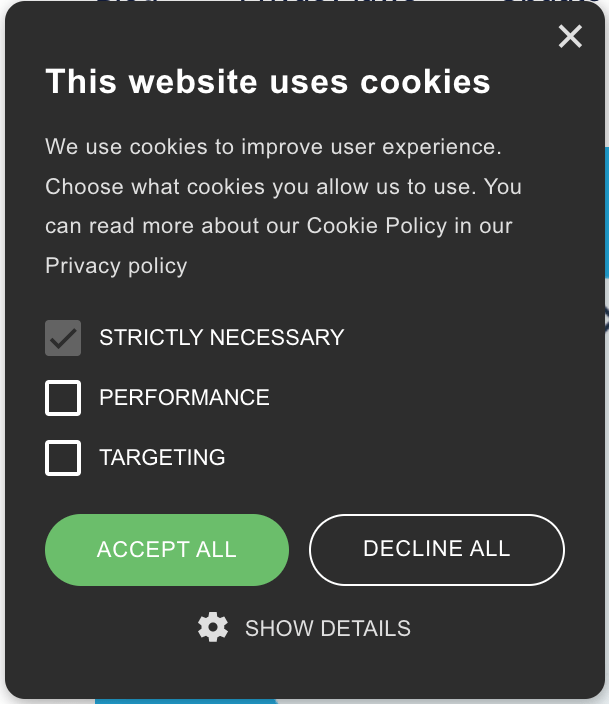
First-party cookies example
Imagine a user is searching for the website (domain) thewashingtonpost.com via a search engine (e.g., Google). After landing on it, the website creates a first-party cookie, which is then served on a user’s computer browser.
Moving forward, these cookies are only available for the exact same domain (thewashingtonpost.com) that a user searched for. These cookies are sometimes labeled as ‘strictly necessary cookies’ in the consent preferences menu.
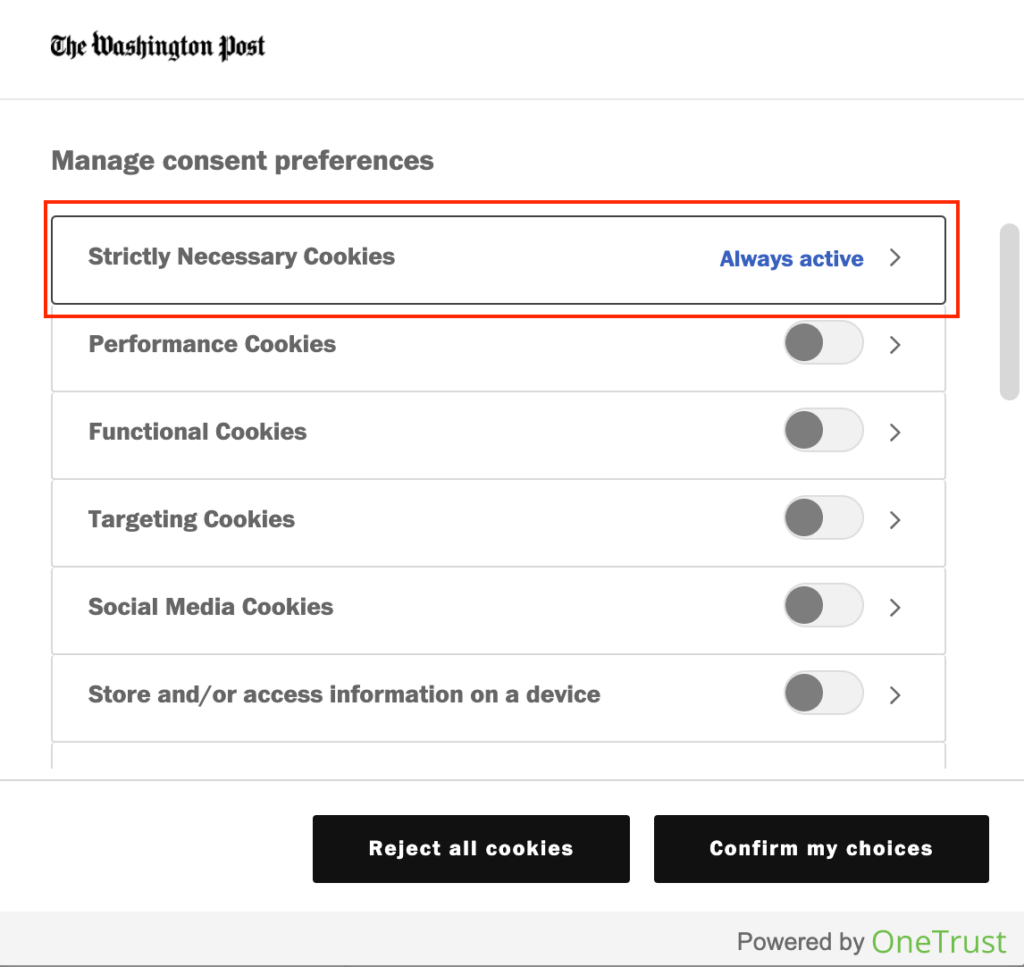
What are Third-Party Cookies?
Third-party cookies are created by other domains and not the ones the user visited directly. They are accessible on any website which has a third-party server’s code.
Third-party cookies are used for cross-site tracking, retargeting, and ad serving. They can also provide some functionality, like a chatbot function provided by a third-party service. They can track users’ activity across the web and are mostly used by advertising companies and social networks like Facebook.
Third-party cookie example
Suppose a user is searching for the website (domain) searchenginejournal.com. After landing on it, he will see a couple of ads placed on the website. In addition to the first-party cookie created by searchenginejournal.com, a third-party cookie will also be created by an advertising network, for example, Google.
A cookie left by an advertising provider or social media site is a third-party cookie.
How to tell if a website uses third-party cookies?
In order to see third-party cookies in Google Chrome, users can do the the following:
- Clicking on the three dots in the upper right corner and selecting More Tools > Developer Tools
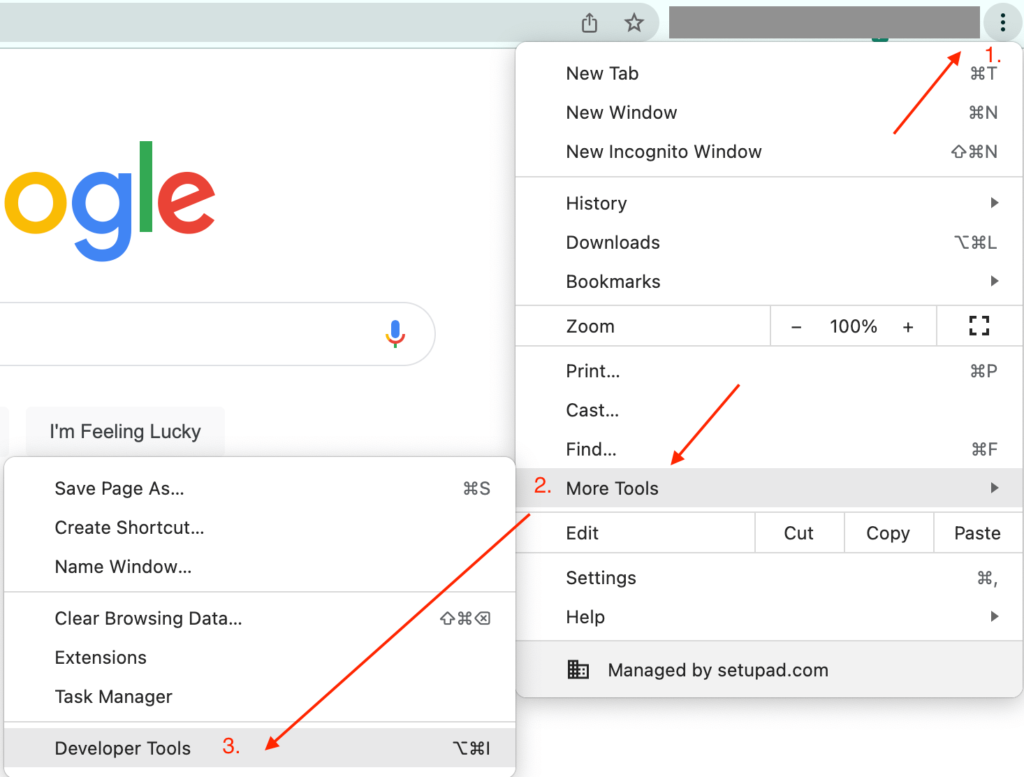
- In Developer Tools, choosing the Application tab
- Double-clicking on the Cookies tab to unfold it
Using the example above, users will be able to see that the website searchenginejournal.com is using third-party cookies. The image below shows that there are other domains listed, which means that the website uses third-party cookies.
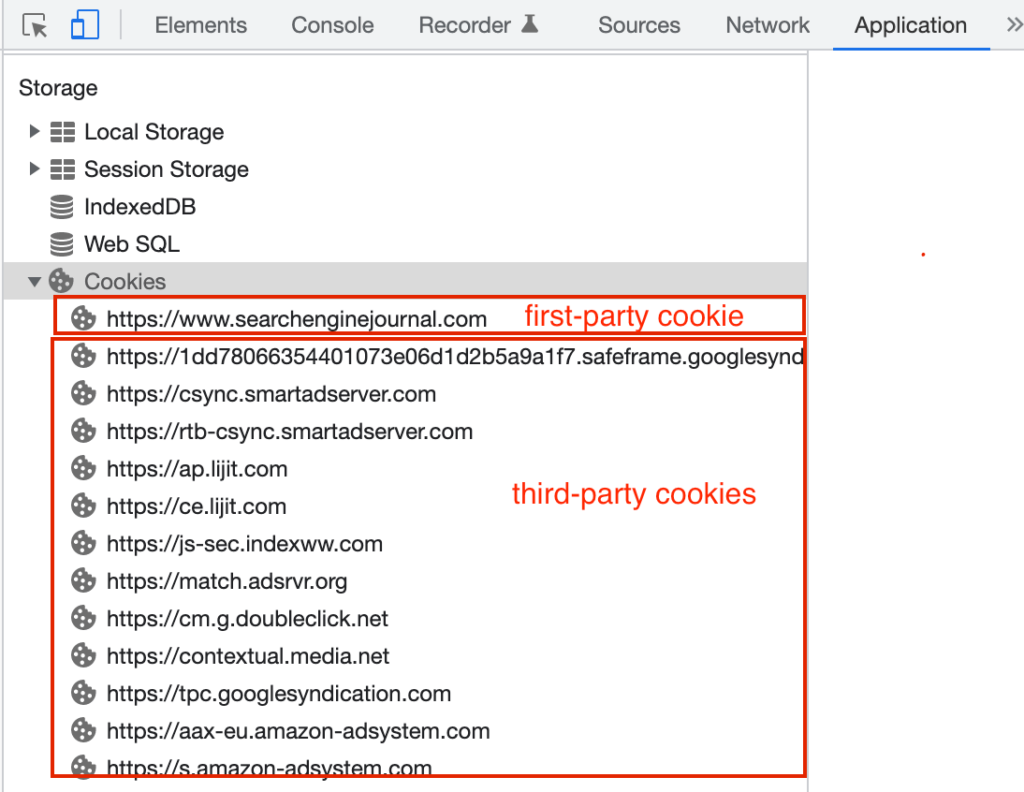
First-Party vs Third-Party Cookies
The table below summarizes key differences between first-party cookies and third-party cookies.
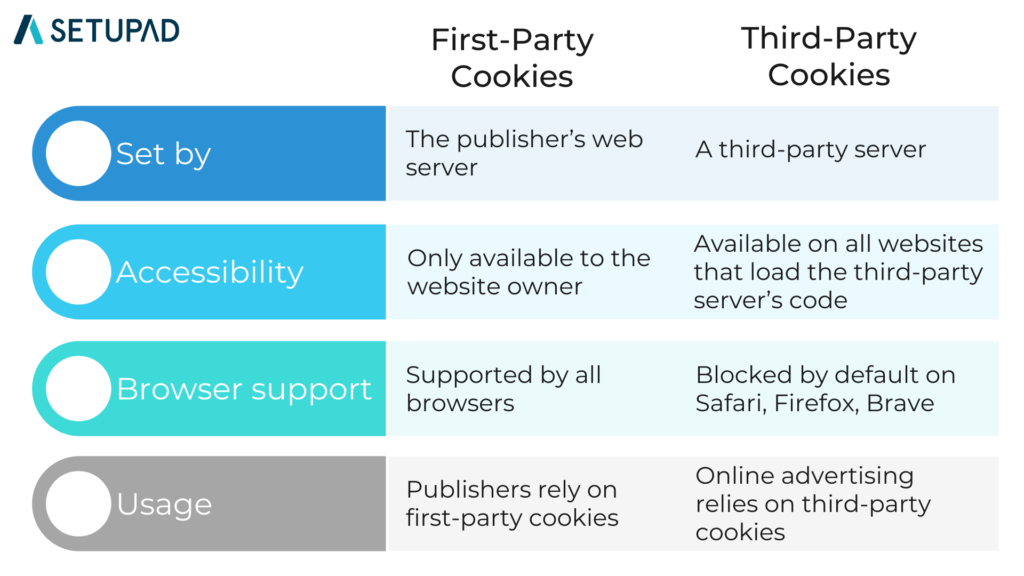
Why is Google Removing Third-Party Cookies?
When Google Chrome, the world’s largest web browser, will phase out third-party cookies, there will be effectively no web browser that supports them.
Blocking third-party cookies isn’t beneficial for Google or other ad industry players. Third-party cookies are what fuels Google’s advertising business–Google Ads, which is responsible for over 80% of the tech giant’s revenue.
However, taking Google’s authority, users’ demand for greater privacy, and various legislations like GDPR and CCPA, Google had to finally cut off third-party cookies. In an attempt to address the new privacy standards while keeping ad targeting intact, Google’s putting all efforts into its ‘Privacy Sandbox’.
Although a very ambitious technology, it may even strengthen Google’s dominance in the ad space in the long run.
According to the IAB research, publishers will lose up to $10 bn in ad revenue and need to find ways to replace this hole with alternative solutions.
What Are the Benefits for Publishers?
Publishers will benefit from these changes in the long run because they will be able to utilize their greatest advantage–first-party data.
Another benefit is that publishers will be able to create high-quality content. If publishers develop the habit of analyzing and understanding their user behavior from first-party data, they can create data-driven content that better caters to their target audiences. Furthermore, data subsequently collected will provide clear behavioral insights.
Contextual advertising also appears to be a promising strategy that publishers will be able to utilize when third-party cookies go away. It allows showing ads to users relevant to the context of the webpage.
The website’s content can be grouped into highly specific sections (like money, lifestyle, real estate), allowing for precise targeting without user identifiers.
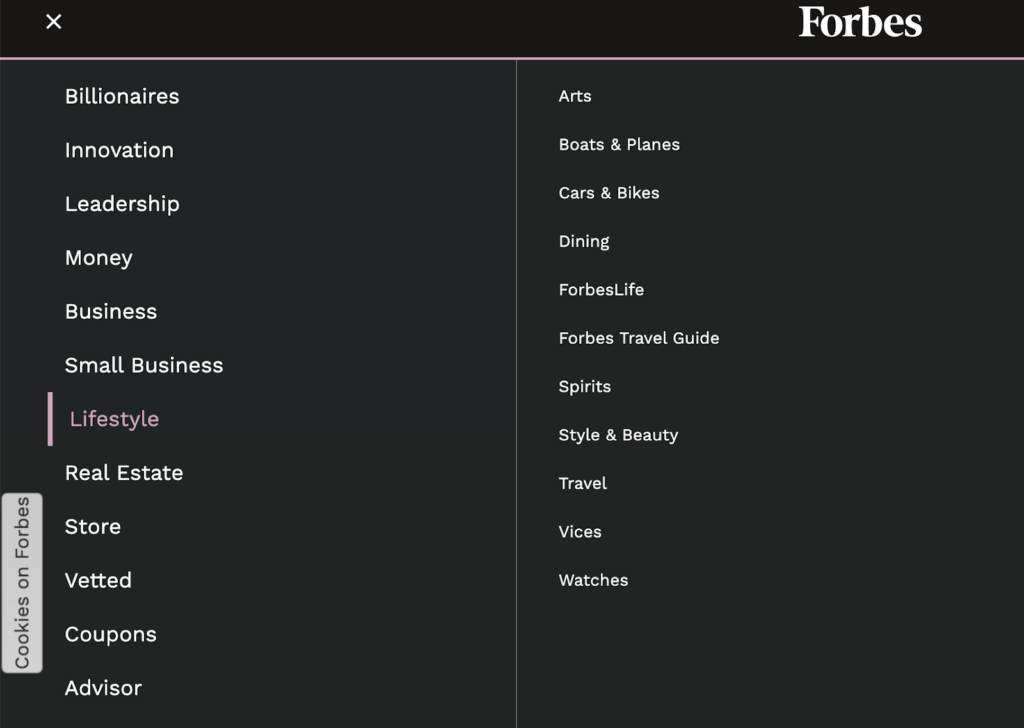
How Will This Shift Impact Advertisers?
Experts predict that advertisers will turn to walled gardens at first, but they will need to rely on first-party data and join data partnerships to scale their reach in the longer term.
Moreover, advertisers will need to create meaningful relationships with consumers and study the drivers behind their behavior. This will include reevaluation of marketing objectives, better control of the frequency of advertising messages, and increased return on ad spending.
The Future of First-Party Data
The main goal of these changes is to create a healthy web ecosystem by taking care of user privacy. To achieve this, both publishers and advertisers have to think about the user experience, focusing on all recent updates like Core Web Vitals.
The advertising industry has already developed more than 50 alternative solutions to prepare for the shift. The aim is to develop a first-party strategy with a focus on people-based marketing. First-party data is the future of user identities’ safety. Users will have more control over their data, and a higher degree of transparency over their data usage.
Our experts note that publishers might see a slight drop in ad revenue, especially from remarketing campaigns. However, the long-term results will be even better than before because of the growing importance of first-party data.


